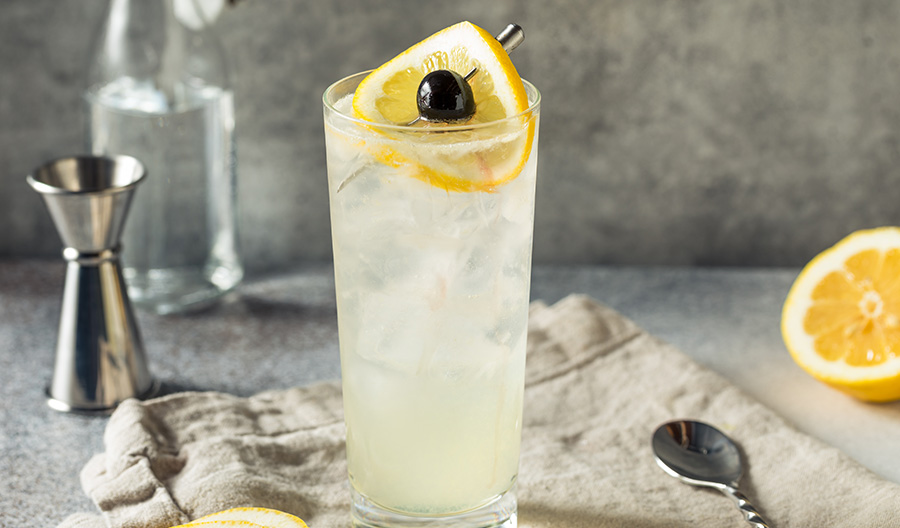Gin is experiencing a renaissance, with craft distilleries and small-batch productions on the rise. Botanicals are becoming more diverse in gin production, with ingredients like seaweed, tea, and exotic fruits being used. Barrel-aged gins are gaining popularity, offering a more complex flavor profile similar to whiskey. Non-alcoholic gins are emerging in the market, catering to those who enjoy the taste of gin but prefer to avoid alcohol. Organic and sustainably produced gins are becoming more common, reflecting a broader trend towards eco-conscious consumption.
The Latest Gin Statistics
The craft gin market is expected to grow at a CAGR of 5% from 2021 to 2026. Global gin consumption increased by 8.3% in 2020.
The UK is the largest gin-consuming country in the world, followed by the US and Spain.
In 2020, flavored gin accounted for 40% of all gin launches globally.
Pink gin is the fastest-growing gin category, with sales increasing by 750% in 2019.
Gin and tonic is the most popular gin-based cocktail, followed by the martini and the negroni.
By 2024, the global gin market is projected to reach $14.4 billion.
What Unique Botanicals are Being Used in Gin Production?
In the world of gin production, distillers are constantly experimenting with unique botanicals to create new and exciting flavors. One such botanical is the Australian Finger Lime, a citrus fruit known for its caviar-like pearls that burst with flavor. When used in gin, it imparts a zesty, tangy flavor that is truly unique.
Another exciting botanical being used is the Butterfly Pea Flower. This Southeast Asian flower is known for its vibrant blue color and subtle earthy flavor. When used in gin, it not only adds a unique flavor profile but also a striking visual element, as the gin takes on a beautiful blue hue.
Distillers are also turning to more exotic spices like Grains of Paradise, a West African spice that has a pungent, peppery flavor with hints of citrus. This spice adds a complex layer of heat and zest to the gin, making it stand out from more traditional offerings.
Sea Buckthorn is another unique botanical being used in gin production. This hardy plant grows along the coastlines of Europe and Asia, and its berries have a tart, tangy flavor. When used in gin, Sea Buckthorn imparts a refreshing, fruity note.
Distillers are experimenting with Sarsaparilla Root, a plant native to Central and South America. Known for its medicinal properties and its use in traditional root beer, Sarsaparilla adds a sweet, rooty, and slightly vanilla flavor to gin, creating a unique and intriguing taste profile.

How are Gin Tasting Profiles Evolving?
One of the most significant trends is the shift towards more complex and layered flavor profiles. Traditional gin is known for its predominant juniper flavor, but modern gins are experimenting with a wider range of botanicals, resulting in a more diverse and intricate taste.
Another trend in gin-tasting profiles is the rise of regional and local flavors. Distillers are increasingly using locally sourced botanicals to create gins that reflect the unique characteristics of their geographical location. This not only adds a new dimension to the taste but also helps in creating a sense of place and identity.
An interesting development in the gin world is the emergence of aged gins. These gins are stored in barrels for a certain period, similar to whiskey, which imparts a unique flavor profile. Aged gins typically have a smoother, richer taste with notes of oak, vanilla, and caramel.
Another notable trend is the rise of low-alcohol and non-alcoholic gins. As more consumers seek healthier and more balanced lifestyles, distillers are responding by creating gins with lower alcohol content, or even alcohol-free versions, without compromising on the taste.
There is a growing trend towards experimental and unconventional gins. Distillers are pushing the boundaries of what is possible with gin, experimenting with unusual botanicals, innovative distillation techniques, and even incorporating elements from other spirits. This has resulted in a wave of exciting and unexpected gin-tasting profiles.

